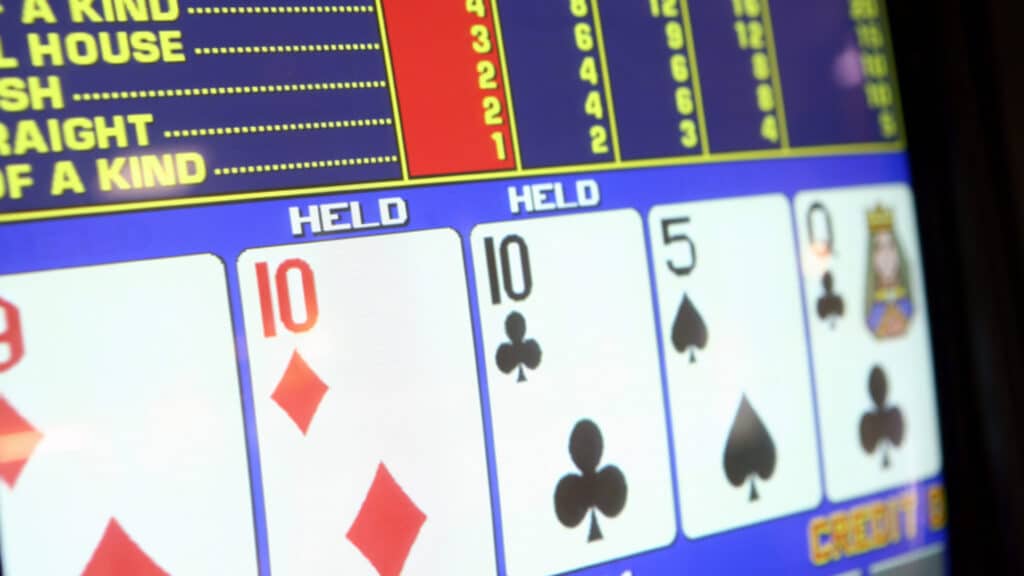Multi-hand play in online video poker is a strategy employed by experienced players to enhance their gaming experience and maximize potential returns. This approach involves playing multiple hands of the same game simultaneously, which can significantly increase the volume of play and improve overall results. However, mastering efficient multi-hand play requires a deep understanding of game mechanics, effective strategy implementation, and excellent multitasking skills. This article explores advanced techniques for efficient multi-hand play in online video poker, providing practical tips and examples to help you optimize your performance.
Understanding Multi-Hand Play
What is Multi-Hand Play?
Multi-hand play refers to the practice of playing several hands of the same video poker game at the same time. This method allows players to increase their action per session, which can lead to higher potential winnings and improved overall performance.
Example: In a typical multi-hand video poker game, you might play up to 50 hands simultaneously. This setup enables you to experience more action and potentially capitalize on favorable conditions more quickly than playing a single hand at a time.
Benefits of Multi-Hand Play
- Increased Hand Volume: Playing multiple hands simultaneously increases the total number of hands played per hour, which can amplify the impact of a favorable RTP (Return to Player) and increase potential winnings.
- Enhanced Game Variety: Multi-hand play allows players to experience a broader range of outcomes within a single session, providing more opportunities to hit winning hands and manage variance.
- Efficient Use of Time: By playing multiple hands, you can make more efficient use of your time, especially during periods of high variance or when encountering frequent bonus offers.
Advanced Strategies for Efficient Multi-Hand Play
Optimize Your Game Layout
- Utilize Multiple Monitors: To manage several hands efficiently, use multiple monitors to keep each hand visible. This setup minimizes the need for constant window-switching and improves your ability to monitor and react to each hand in real-time.
Example: With two monitors, you can have four video poker games open at once—two games on each screen. This arrangement allows you to keep track of all active hands and make decisions more quickly.
- Organize Game Windows: Arrange game windows in a manner that maximizes visibility and minimizes distractions. Use a grid or stacked arrangement to keep your hands easily accessible and visible.
Example: On a single monitor, position four video poker games in a 2×2 grid. This layout ensures that all active hands are visible simultaneously, allowing for efficient decision-making and gameplay.
Implement Effective Bankroll Management
- Set Appropriate Limits: Establish limits based on your bankroll and comfort level. Playing multiple hands can amplify both potential gains and losses, so it’s essential to set limits that align with your risk tolerance and financial situation.
Example: If your bankroll supports playing 10 hands at $1 per hand, ensure that you have enough buffer to handle variance. Adjust the number of hands or stakes if needed to stay within your bankroll limits.
- Adjust Stakes Based on Performance: As you engage in multi-hand play, consider adjusting your stakes according to your current performance and bankroll status. Lowering stakes during losing streaks can help manage risk and protect your bankroll.
Example: If you experience a significant downswing, reduce the number of hands or lower your stakes to $0.50 per hand. This adjustment helps mitigate risk and ensures sustainability.
Enhance Focus and Efficiency
- Develop a Consistent Routine: Create a standardized routine for handling each hand to streamline decision-making and minimize errors. Use hotkeys and shortcuts to speed up actions and reduce manual input.
Example: Assign specific hotkeys for actions like holding cards or discarding them. This practice reduces the reliance on mouse clicks and allows for faster, more accurate decision-making.
- Minimize External Distractions: Maintain focus by reducing external distractions. Create a dedicated gaming environment that allows you to concentrate solely on multi-hand play.
Example: Use noise-canceling headphones and declutter your workspace to minimize distractions. Keeping your environment focused helps you stay attentive and make better decisions.
Leverage Advanced Software Tools
- Tracking and Analysis Tools: Utilize tracking software to monitor your performance across multiple hands and analyze your play. Tools like PokerTracker or Hold’em Manager can provide detailed insights and help identify areas for improvement.
Example: After a multi-hand session, review your performance statistics and hand histories using tracking software. Analyze trends and patterns to refine your strategy and address any weaknesses.
- Game-Specific Tools: Explore any built-in tools or features offered by the video poker game to enhance multi-hand play. Familiarize yourself with these tools to maximize their effectiveness.
Example: Some video poker games offer auto-hold features that automatically hold the most beneficial cards. Using these features can improve efficiency and reduce manual decision-making.
Managing Variance and Tilt
Addressing Variance
- Track Results Over Time: Monitor your results across multiple hands and sessions to gain a comprehensive understanding of your performance and handle variance more effectively.
Example: Track your multi-hand sessions over a month to assess your performance and identify the impact of variance. This approach helps you distinguish between short-term fluctuations and long-term trends.
- Adjust Strategy Based on Trends: If you observe persistent issues with variance, consider adjusting your strategy or the number of hands you play.
Example: If variance leads to significant swings in your results, reduce the number of hands or lower your stakes to align with your bankroll and risk tolerance.
Managing Tilt
- Recognize Signs of Tilt: Be aware of signs that you may be on tilt, such as making impulsive decisions or experiencing frustration. Recognizing these signs can help you take corrective action.
Example: If you notice yourself becoming frustrated or making hasty decisions, take a break from multi-hand play to reset your mindset and regain focus.
- Implement Tilt Management Techniques: Develop strategies to manage tilt, such as taking regular breaks, setting time limits for sessions, and practicing relaxation techniques.
Example: Set a timer for regular breaks during your multi-hand sessions. Use this time to step away from the screen, relax, and clear your mind before returning to play.
Practical Examples of Efficient Multi-Hand Play
Example 1: Optimized Game Layout and Focus
A player uses three monitors to display six video poker games simultaneously. They arrange the games in a 2×3 grid across the monitors and use hotkeys for common actions. This setup allows the player to efficiently manage all active hands and make quick, informed decisions, resulting in improved overall performance.
Example 2: Bankroll Management and Adjustments
Another player starts with a bankroll of $1,500 and plays 10 hands at $1 per hand. After a series of losses, they reduce the number of hands to five and lower their stakes to $0.50 per hand. This adjustment helps the player manage variance and protect their bankroll while continuing to engage in multi-hand play.
Example 3: Tilt Management and Recovery
A player experiences a series of unfortunate hands and begins to feel frustrated. They take a 20-minute break, engage in a relaxing activity, and return to multi-hand play with a refreshed mindset. This approach helps the player regain focus and improve their performance in subsequent hands.
Conclusion
Efficient multi-hand play in online video poker requires a strategic approach, effective use of technology, and strong focus. By optimizing your game layout, managing your bankroll, and leveraging advanced software tools, you can enhance your multi-hand play experience and improve your overall performance.
Addressing variance and tilt effectively is also crucial for long-term success. With the right techniques and strategies, you can maximize your playtime, increase potential winnings, and achieve a more rewarding video poker experience.



